[ Retro Scan of the Week ] The $99 Virtual Boy
July 21st, 2014 by Benj Edwards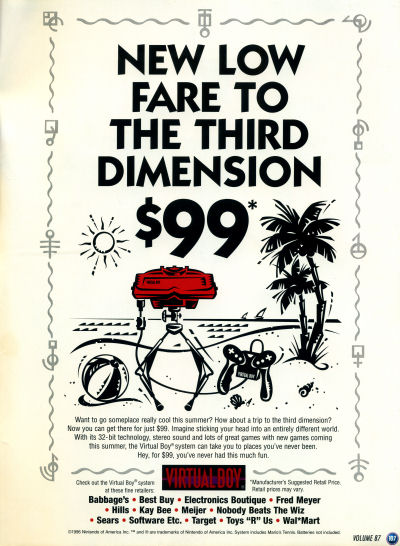 …in which Nintendo begs, “Please, PLEASE, buy a Virtual Boy.”
…in which Nintendo begs, “Please, PLEASE, buy a Virtual Boy.”
Oh how times change. Back in January, I posted a scan of an early, cocky Nintendo Virtual Boy advertisement from 1995 (the year the Virtual Boy launched). Here’s an ad for the Virtual Boy just one year later in which Nintendo advertises the console’s new low price of $99 (its original MSRP was US $179.99, which is $275.26 today when adjusted for inflation).
As you probably know, things didn’t go so well for the Virtual Boy. I bought one new for $30 from Toys ‘R’ Us in either late 1996 or early 1997.
Discussion Topic of the Week: Imagine a world in which the Virtual Boy had a full color display but cost twice as much (say, $399.99) new. Do you think the Virtual Boy would have fared better in the marketplace?
—
See Also: Virtual Boy Wasteland (RSOTW, 2014)
See Also: Virtual Boy Vortex (RSOTW, 2012)
See Also: The History of Stereoscopic 3D Gaming (PC World, 2011)


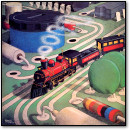
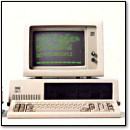
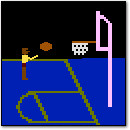
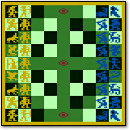
July 21st, 2014 at 1:18 pm
I don’t think that system was ever going to be popular. I bought one at Best Buy for $20 at the very end and even at that price it wasn’t really worth it. The problem is that it isn’t really portable and you have to have a table to use it. I was never really sure what Nintendo was trying to do with this thing, it was interesting concept, but poor execution and I don’t think the technology was there yet.
July 21st, 2014 at 2:55 pm
It probably would have helped a little, but I don’t think the monochrome display was the main thing holding it back. Like Eagles409 said, the system was marketed as a portable, but it wasn’t very portable. It’s not something you can pull out of your pocket and start playing like a game boy or smart phone.
July 21st, 2014 at 4:28 pm
Yeah… lots of vacations are over by the end of summer.
I enjoyed the Virtual Boy that I bought for $20 from Blockbuster, thought it was a cool if weird little piece of technology, and still wish that Mario Clash, Wario Land, Teleroboxer, maybe Space Squash would receive 3DS eShop ports. It just existed in this weird middle ground between home console and true portable, it was difficult to show it off to more than one person at a time the way you could with a game on TV, an arcade game, or even a portable game with the screen on a hand-held unit.
Nintendo never seemed to want to show what the actual games looked like (or they may have even had problems getting footage of it), and it seemed like neither NOA and Nintendo of Japan wanted to put much effort into marketing it and just kind of let it out to die and hoped for the best.
I feel like if production hadn’t ended on new games so soon that the Virtual Boy could have had a chance to grow in spite of its flaws (the worst of which, after all, is the tiny game library), but new game development is pretty moot if no one has the hardware, no one played it at home outside of Blockbuster rentals, and no one ultimately wanted to purchase one for more than $30.
July 21st, 2014 at 4:39 pm
And to address the discussion question, with a color screen, the few games made available for it probably would have been a somewhat nicer experience (though I have suspicions that higher frequency light being used in the LED array/oscillating mirrors setup of the VB’s display could have resulted in more headaches or dizziness for users), but as a device that was basically in effect a novelty and part of Gunpei Yokoi’s long history of entertaining, novel, and unique toys, selling it as a 3-D “virtual reality” device — implied to display polygonal 3-D graphics — into the $400+ high end of the mid-’90s console market along with color home devices that were ACTUALLY capable of polygonal graphics would have been an even worse death sentence for the VB by comparison. By the time of the VB’s release, anything with sprites were seen as old hat and becoming obsolete, so if you’re going to release a technologically-limited budget unit with novel features, best to keep it a budget product as much as possible.
July 21st, 2014 at 11:03 pm
As an aside, that listing of retailers where you could purchase it is half filled with stores that I remember from my childhood/teen years that are now out of business. Babbages, Hills, Software Etc., Kay Bee. (Hills might still be around, but when I was 10 we moved away from where there was one and they didn’t have that chain where we moved, so it’s dead to me. 😉 )
Oh, those old heydays of computer entertainment.
July 22nd, 2014 at 12:40 am
Even a full color display at regular retail price couldn’t have saved the Virtual Boy. The design was so awkward to use for very long that you’d be taking a break to stretch your neck muscles long before you started to experience eye strain.
I wish they’d bring the games to the 3DS Virtual Console.
July 22nd, 2014 at 6:27 am
Oh, no. There’s no way the Veeb could have been a contender at 400 bucks. That would’ve DESTROYED any potential gains it would’ve gotten from being full-color.
I still think the fundamental issue they had is that there was nowhere to ADVERTISE the Veeb. There simply wasn’t any way for them to demonstrate it was more than just “a red Gameboy” outside of in-store displays.
And display units had their own issues. Anyone walking by that didn’t stick their head in got nothing other than “wow that looks weird. ” Assuming the display unit wasn’t broken. Or worse, running Red Alarm.
It’s my understanding that Yokoi didn’t feel the Veeb was ready to ship and was somewhat perturbed by Nintendo pushing it out when they did. Which is undertstandable, it feels like hardware that is unsure of it’s place in the world(to this day, I can’t explain why it shipped with a battery box), and being incomplete would explain a lot of that.